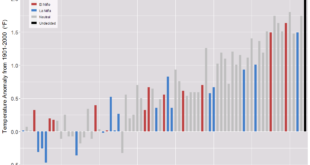 The Royal Society research article, The broiler chicken as a signal of human reconfigured biosphere by Carys E. Bennett et. el. (12/12/18) , provides the evidence of how human intervention has changed a species.
The Royal Society research article, The broiler chicken as a signal of human reconfigured biosphere by Carys E. Bennett et. el. (12/12/18) , provides the evidence of how human intervention has changed a species.
Breeding by natural selection has been modified by human-directed selection. While the size of the domesticated chicken in historical times was little different to the red jungle fowl (figure 3), domestic chicken bone morphology shows that selective breeding practices took place as early as the sixteenth century [53,54]. Chickens from the late twentieth century are markedly different in terms of size (figures 3 and 4), growth rate (figure 5) and body shape. The change in body mass and body shape has been visually documented by photographs of broiler breeds throughout ontogeny from 1957, 1978 and 2005 [14]. Broilers from a 1957 breed are between one-fourth and one-fifth of the body weight of broilers from a twenty-first century breed [13,14]. The modern broiler is a distinctive new morphotype with a relatively wide body shape, a low centre of gravity [13] and multiple osteo-pathologies. If left to live to maturity, broilers are unlikely to survive. In one study, increasing their slaughter age from five weeks to nine weeks resulted in a sevenfold increase in mortality rate [55]: the rapid growth of leg and breast muscle tissue leads to a relative decrease in the size of other organs such as the heart and lungs, which restricts their function and thus longevity [56]. Changes in the centre of gravity of the body, reduced pelvic limb muscle mass and increased pectoral muscle mass cause poor locomotion and frequent lameness [15]. Unlike most other neobiota, this new broiler morphotype is shaped by, and unable to live without, intensive human intervention.
The article includes a number of interesting charts including the one copied here and in reference to the figure they refer to a derivative:
Chicken-meat consumption is growing faster than any other meat type and is soon to outpace pork
Data used in the paper is available under Supplemental Material (left side bar).
